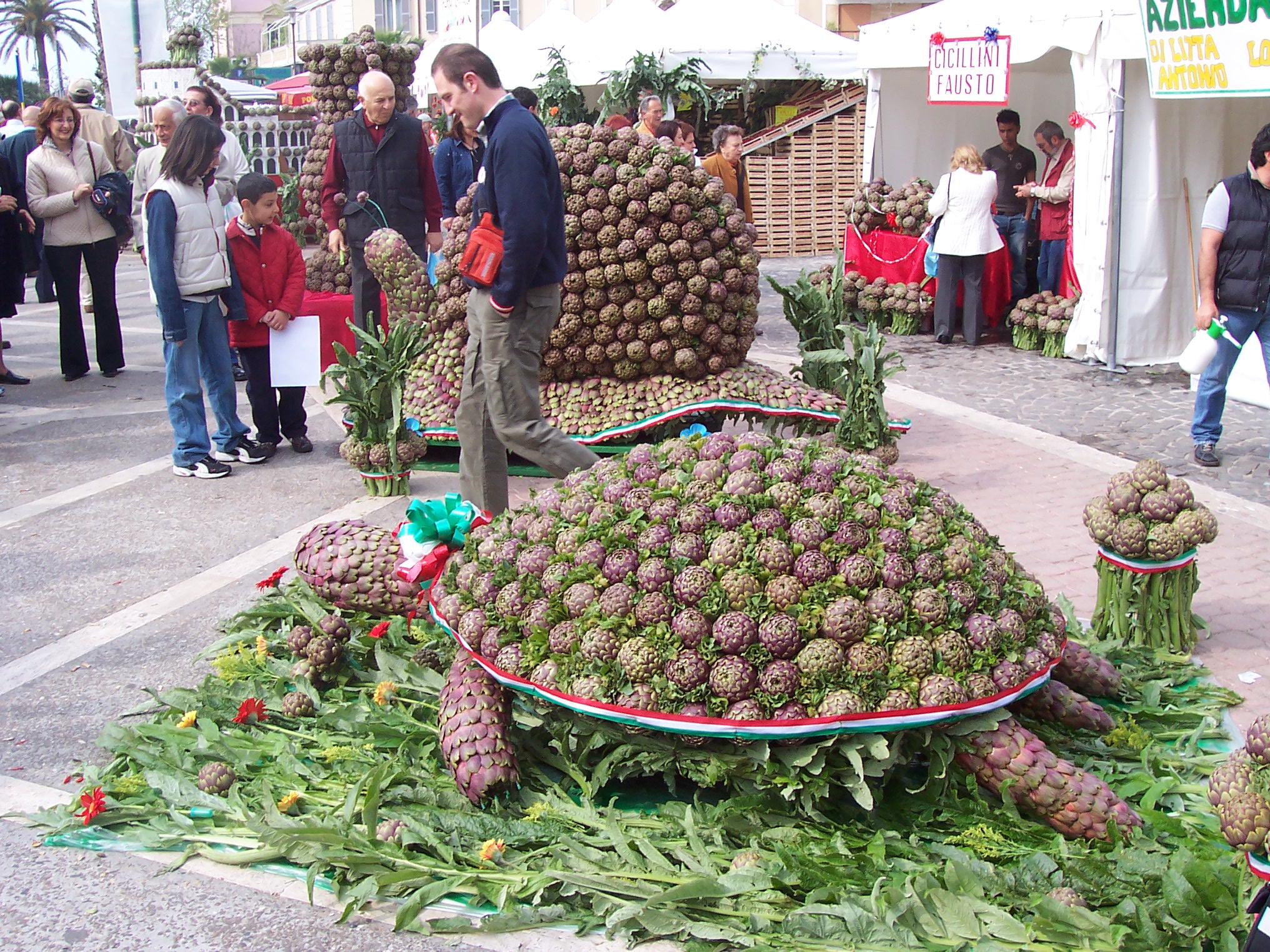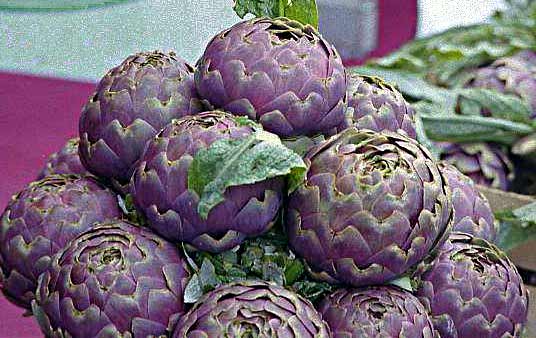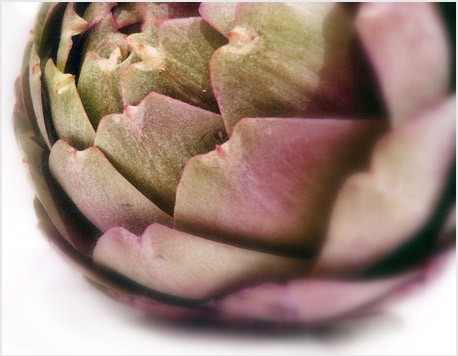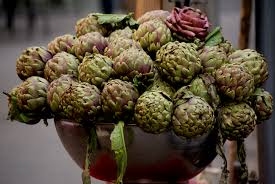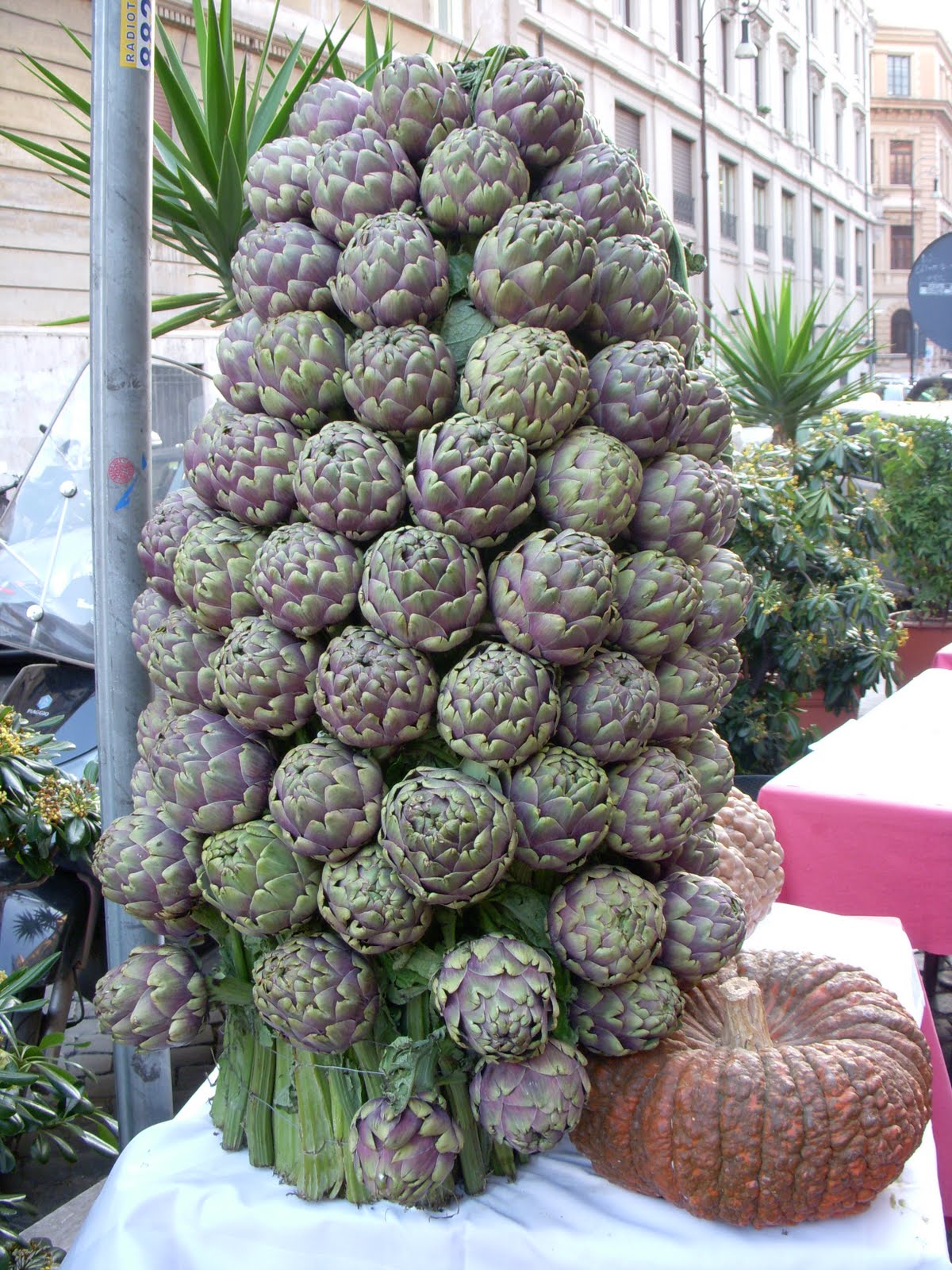
Roman Artichoke
This post is also available in:
 Italiano (Italian)
Italiano (Italian)
Also known as “Cimarolo” or “Mammola”, this variety of artichoke originates from the area between Cerveteri and Ladispoli, also according to its visual representations found in some Etruscan tombs in Tarquinia. Some experts claim that Etruscan farmers were the first to domesticate this plant and thus obtain the local Cynara cardunculus scolymus species. Still, the Roman artichoke has been systematically grown only since the end of the Second World War. The local consortium, born to protect this very species (Consorzio per la tutela del Carciofo Romanesco) has recently been granted the official PGI certification (IGP – Indicazione Geografica Protetta). According to its strict guidelines, this artichoke is thoroughly grown according to specific production and environmental requirements.
This herbaceous plant has a typical ash colour and branched stems; it can be mixed with cereals and other vegetables, as it sensibly “improves” the surrounding topsoil. Many dedicated festivals take place when this artichoke is particularly abundant, from November through April, celebrating its wide use in many different recipes. It is also available all over Italy and in Europe, while it should be consumed as fresh as possible, although it can also be kept in the fridge for a few days.
This post is also available in:
 Italiano (Italian)
Italiano (Italian)
Contatti
Roma(RM)
